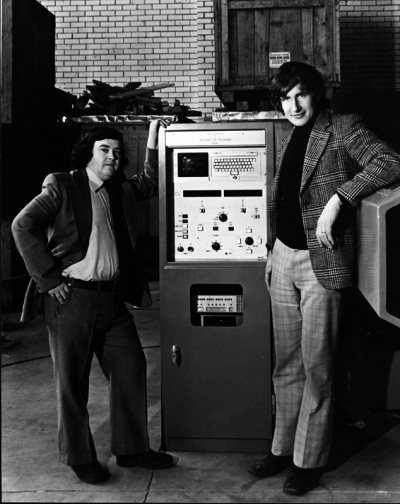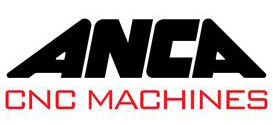
Family, fulfillment, and a fascination with technology are all part of a formula that has seen ANCA lead the demanding niche of CNC tool and cutter grinders for a half-century.
In its time, the Australia-based global business has made an enormous yet largely hidden contribution to the world, selling over 10,000 5-axis CNC machines to over 2,500 customers. Around 1.1 billion tools have been created using ANCA’s grinders.
“You would be very unlikely to find any bit of advanced equipment, anywhere in the world, that hasn’t been touched by a cutting tool which has been manufactured on one of our machines,” explains co-founder Pat Boland, whose company’s customers include Boeing, Rolls-Royce, Iscar, Sandvik, Sutton Tools and many other household names.
Boland and Pat McCluskey (pictured) – then an electrical engineer and an industrial electronics tradesman – met at a government-owned munitions factory at Melbourne in 1968. The two Pats started ANCA in 1974 in a spare room at Boland and wife Libby’s home.
“It wasn’t about money in the beginning, and for me it’s not about money now...I get my kicks out of designing new machines,” said McCluskey. “Even before we started ANCA, Pat and I have always been driven by simply wanting to get machines to do things better. My enduring philosophy in business is if you always do what you’ve always done, you’ll always get what you’ve always gotten. New ideas and new thinking are the basis of our business.”
50 years and counting
ANCA’s highly sophisticated CNC grinding machines are exported around the world, with 98 percent of its revenue being generated by exports. The ANCA Group also makes associated equipment and software, including robot arms, software, and control systems, and offers automation services and technology to OEM machine builders.

Leading the incredibly demanding tool and cutter market – where nanometer-level details matter – means a reinvestment of roughly a tenth of revenues back into R&D.
A near-obsession with solving customer problems has seen ANCA contribute a collection of world firsts to its industry, including the first probe for digitizing tools, the first modem for support and diagnostics in a machine, first full and true 3D simulations of the grinding process, and many more.
Martin U. Ripple, who has been at the helm of ANCA as CEO since November 2022, reflects on the company's enduring legacy. “In all my interactions, I've observed a consistent thread - our customers invariably share fond recollections of their encounters with ANCA dating back to the 70s, 80s, and 90s. It's evident that there's a deep-seated loyalty and trust towards our brand,” he notes.
Ripple, always keen on uncovering the unique elements that set a business apart, asks, 'What is the secret ingredient that differentiates us from our competitors? What makes ANCA exceptional?' His answer is the involvement of family in the business, a fervent passion driving the company forward, and a steadfast commitment to providing customers with the most innovative products. This blend, according to Ripple, is the essence of ANCA's success and longevity."
Edmund Boland, son of Pat and ANCA CNC Machines’ General Manager, values ANCA’s agility as a privately owned company which enables swift decisions to support ANCA’s people and customers.
“ANCA has always endeavored to stay ahead of the curve, anticipating market trends and delivering cutting-edge solutions which enable our customers to thrive. With 50 years of innovation behind us, our product and technology portfolios are perfectly placed to meet the challenges of the future.”
The delivery of technical and practical excellence has required a sharp focus on both vertical integration – creating everything from the machines’ motors to their polymer concrete bases to their sheetmetal canopies – and both trade and university-taught skillsets.
ANCA has trained more than 60 apprentices and established its formal apprenticeship program in 2011. McCluskey enthusiastically wrote the course material for this.
While being very particular with skill and technology development is one way to look at ANCA’s story, Pat Boland also likes to zoom out to a very general view.
The ANCA era runs 50 years and counting, touching countless lives, operating in the background.
It’s shorter than but has similarities to the overall story of toolmaking: critical to industrial progress, even if it needs pointing out every now and then.
“For the vast sweep of history, the only evidence of homosapiens and our predecessors are cutting tools,” says Boland.
“And a number of the broad eras of human life are really named after cutting tools -- the stone age, the bronze age, the iron age. What we’re talking about is the technology of cutting tools as much as anything.”
Celebrating a golden achievement across the globe
To mark the occasion of ANCA’s 50th anniversary the company is hosting a series of open houses, seminars, events, and attending tradeshows worldwide. As innovation has motivated ANCA throughout the company's history, new products and developments will be at the center of the 50th-year celebrations.
At global tradeshows and ANCA Open House events, precision manufacturers can experience new hard- and software for micro tool and gear tool manufacturing, edge preparation, closed-loop manufacturing and automation.
ANCA's large and experienced group of engineers and developers is continuously presenting new solutions to customers' needs. The highest quality tools and lowest cost per part are the guiding principles leading to groundbreaking, real-world innovations.
Examples are the new MicroX CNC grinding machine, using nanometer control technology and ANCA Machine Intelligence to produce micro tools of unseen quality or the AIMS system, the world's first and only autonomous system for tool manufacturing.
Contact Details
Related Glossary Terms
- computer numerical control ( CNC)
computer numerical control ( CNC)
Microprocessor-based controller dedicated to a machine tool that permits the creation or modification of parts. Programmed numerical control activates the machine’s servos and spindle drives and controls the various machining operations. See DNC, direct numerical control; NC, numerical control.
- edge preparation
edge preparation
Conditioning of the cutting edge, such as a honing or chamfering, to make it stronger and less susceptible to chipping. A chamfer is a bevel on the tool’s cutting edge; the angle is measured from the cutting face downward and generally varies from 25° to 45°. Honing is the process of rounding or blunting the cutting edge with abrasives, either manually or mechanically.
- grinding
grinding
Machining operation in which material is removed from the workpiece by a powered abrasive wheel, stone, belt, paste, sheet, compound, slurry, etc. Takes various forms: surface grinding (creates flat and/or squared surfaces); cylindrical grinding (for external cylindrical and tapered shapes, fillets, undercuts, etc.); centerless grinding; chamfering; thread and form grinding; tool and cutter grinding; offhand grinding; lapping and polishing (grinding with extremely fine grits to create ultrasmooth surfaces); honing; and disc grinding.
- grinding machine
grinding machine
Powers a grinding wheel or other abrasive tool for the purpose of removing metal and finishing workpieces to close tolerances. Provides smooth, square, parallel and accurate workpiece surfaces. When ultrasmooth surfaces and finishes on the order of microns are required, lapping and honing machines (precision grinders that run abrasives with extremely fine, uniform grits) are used. In its “finishing” role, the grinder is perhaps the most widely used machine tool. Various styles are available: bench and pedestal grinders for sharpening lathe bits and drills; surface grinders for producing square, parallel, smooth and accurate parts; cylindrical and centerless grinders; center-hole grinders; form grinders; facemill and endmill grinders; gear-cutting grinders; jig grinders; abrasive belt (backstand, swing-frame, belt-roll) grinders; tool and cutter grinders for sharpening and resharpening cutting tools; carbide grinders; hand-held die grinders; and abrasive cutoff saws.







